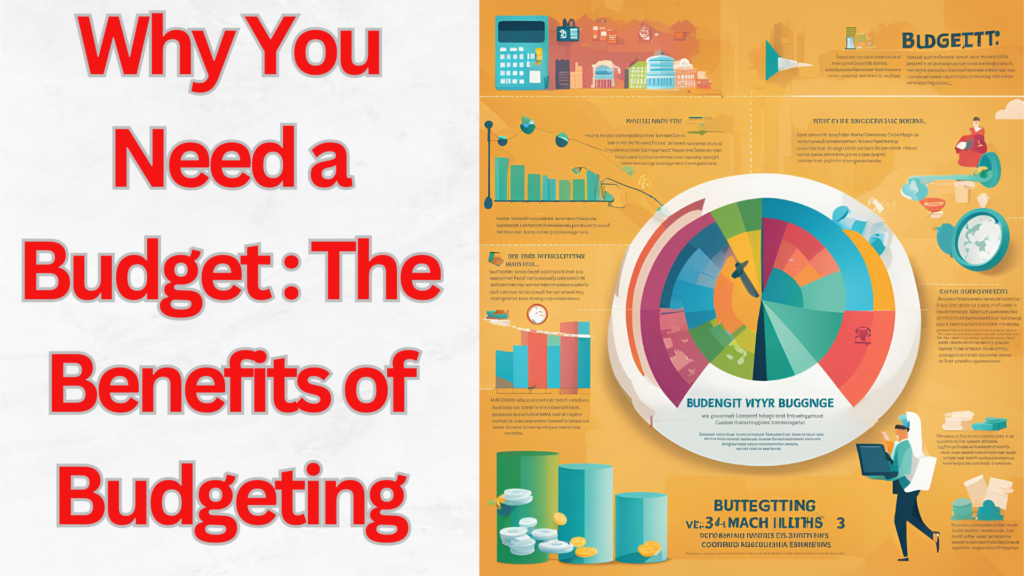How to Create a Budget ? A Comprehensive Guide for Smart Money Management .

Creating a budget is the cornerstone of financial success. It helps you gain control over your finances, make informed spending decisions, and achieve your financial goals. In this guide, we’ll walk you through the step-by-step process of creating a budget that works for your lifestyle, ensuring you save more, spend smarter, and eliminate debt.
Why You Need a Budget : The Benefits of Budgeting

Budgeting is more than just tracking expenses; it’s a powerful tool for building financial stability and achieving long-term goals. Whether you’re saving for a big purchase, paying off debt, or simply trying to cut unnecessary expenses, a budget is essential.
The Key Benefits of Creating a Budget
- Improved Financial Awareness: A budget gives you a clear view of where your money goes, helping identify areas where you can save.
- Avoids Overspending: By setting spending limits, you avoid making impulse purchases.
- Helps Build an Emergency Fund: Allocating funds for emergencies prepares you for unexpected expenses.
- Fosters Financial Discipline: Consistent budgeting cultivates healthy financial habits.
Overcoming Budgeting Myths
- Myth 1: “Budgeting is Restrictive” — A budget is actually liberating as it lets you allocate funds to things you value.
- Myth 2: “I Don’t Need a Budget” — Whether you earn a little or a lot, a budget is crucial for financial success.
- Myth 3: “Budgeting is Complicated” — With the right tools and mindset, creating a budget is simple and effective.
Step-by-Step Guide to Creating a Budget that Works
Creating a budget may seem daunting, but by breaking it down into smaller steps, it becomes much more manageable. Here’s a step-by-step guide to building a budget that fits your lifestyle and goals.
Calculate Your Total Income
The first step in budgeting is to know exactly how much money you have coming in. Include all sources of income such as salary, freelance work, rental income, or side gigs.
Track and Categorize Your Expenses
- List your fixed expenses (rent, utilities, car payments) and variable expenses (groceries, dining out).
- Use apps like Mint or YNAB to automate the process, making tracking easier.
- Identify areas of overspending and look for categories where you can cut back.
Set Financial Goals
Set short-term goals (e.g., pay off credit card debt) and long-term goals (e.g., saving for a house). Define clear and actionable targets for each category.
Choose a Budgeting Method : Finding the Right
There are several budgeting methods to choose from. The right one depends on your financial situation and personal preferences. Here are some of the most popular budgeting strategies.
The 50/30/20 Rule
Allocate 50% of your income to needs, 30% to wants, and 20% to savings and debt repayment. This method is ideal for beginners as it offers a balanced approach.
Zero-Based Budgeting
Every dollar of your income is assigned a specific purpose, leaving your budget at zero at the end of the month. It’s perfect for those who want detailed control over their spending.
Envelope System
Use cash and physical envelopes for each spending category (e.g., groceries, dining, entertainment). Once the envelope is empty, you can’t spend any more in that category. This method is effective for controlling impulse spending.
Implementing and Maintaining Your Budget
Creating a budget is only the beginning. The real challenge is sticking to it. Here’s how to implement your budget effectively and make necessary adjustments along the way.
Automate Savings and Payments
- Set up automatic transfers to your savings and investment accounts.
- Automate bill payments to avoid late fees and maintain a good credit score.
Review and Adjust Your Budget Regularly
Life is unpredictable, and your budget should adapt to changes like salary increases, new expenses, or financial goals. Set a monthly review schedule to analyze and tweak your budget.
Involve the Whole Family
If you’re budgeting as a couple or family, involve everyone in the process. This encourages accountability and ensures that all members are aligned with the financial plan.
Overcoming Common Budgeting Challenges
Budgeting isn’t always smooth sailing. Many people encounter challenges along the way. Understanding these hurdles can help you anticipate and overcome them.
Dealing with Unexpected Expenses
- Set aside an emergency fund that covers 3-6 months’ worth of living expenses.
- Use your emergency fund only for true emergencies, like medical bills or urgent home repairs.
Staying Motivated
It’s easy to lose motivation, especially during tough financial times. Keep your goals visible (use vision boards) and celebrate small milestones.
Managing Irregular Income
For freelancers or business owners, irregular income can complicate budgeting. Base your budget on minimum monthly income and adjust for surplus incom
Conclusion: Building a Budget is Building a Better Future
Creating a budget is the first step to taking control of your financial life. It allows you to live within your means, save for future goals, and avoid the stress of debt. By understanding your income, setting clear goals, and choosing a budgeting method that works for you, you can create a sustainable financial plan that adapts as your life changes.